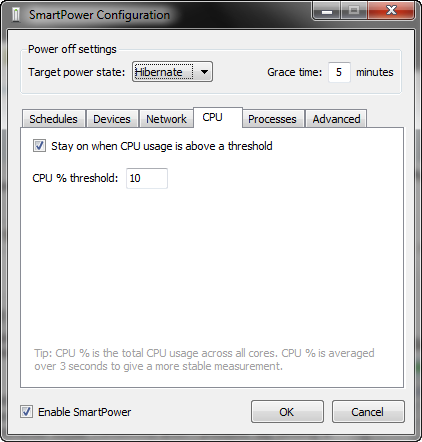Better Computer Power Management with SmartPower
Power management in Windows has worked fairly well since Windows Vista shipped. You can control far more variables about when and how things turn on and off. Even in Windows 7, the hibernation and sleep features aren't as smart as I'd like them to be. Most laptops include a solution from the laptop manufacturer meant to further enhance power management, but they still don't nail it.
I have a fair number of background processes I want to complete before my computer shuts down for the night. I have backup operations I want to run at times when I'm guaranteed to be sleeping these are things that benefit from a more granular control over the power management features. For instance, if I'm uploading a video, I may want to call it a night before the upload completes. There's no good way to be sure you can upload a video and shut your computer down. Or at least there's no good way without installing SmartPower.
SmartPower provides the kind of configurable power management that allows for completion of important processes and dialing down the power when you don't need it. That's a win both from a productivity standpoint and in money saving. I'm fairly certain tweaking the settings on SmartPower will save me more than a few dollars per month.
Some of the configuration options include keeping the power on when network activity is above a certain threshold on a specific network interface, which solves the file upload activity problem or when you've got a large download in progress. Keeping power on when CPU is above a certain level, which is handy for people like me who process hours long video rendering projects. If specific processes are running, you can keep your computer turned on. And more importantly, you can wake your computer up if you want to keep the power to a minimum but cycle it on right before a scheduled backup or other regularly planned event.

While it sounds like I just described a whole bunch of ways to keep your computer running longer, by setting all those rules, what you actually accomplish is telling your computer to hibernate or sleep whenever those conditions aren't present. By setting a wake-up schedule, you get the added benefit of being able to hibernate your computer, suspend your computer, or shut it down after specific tasks are complete. You can schedule your computer to wake back up for certain things and start the whole process all over again.
What's really great about SmartPower is the price. I would be willing to pay for a feature like this, but currently SmartPower is free. Download SmartPower and start taking control of when your computer powers down in various states.